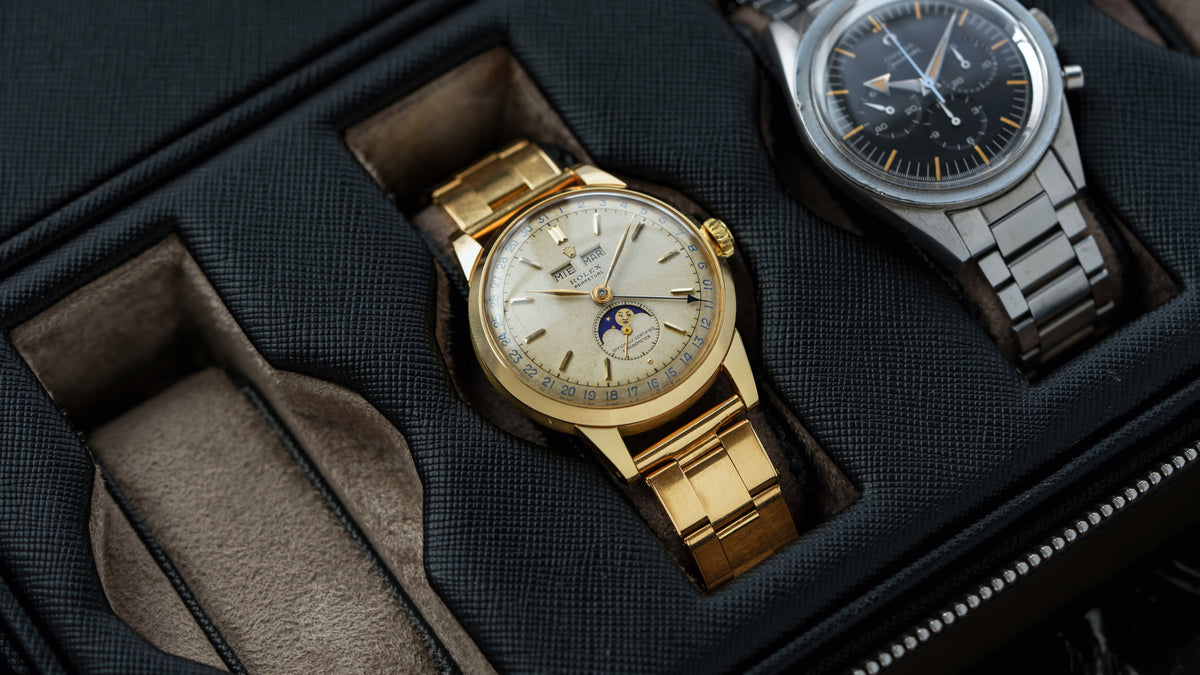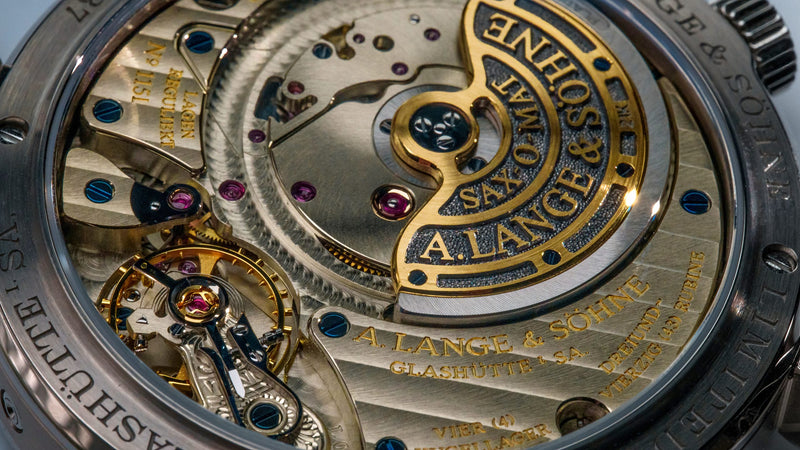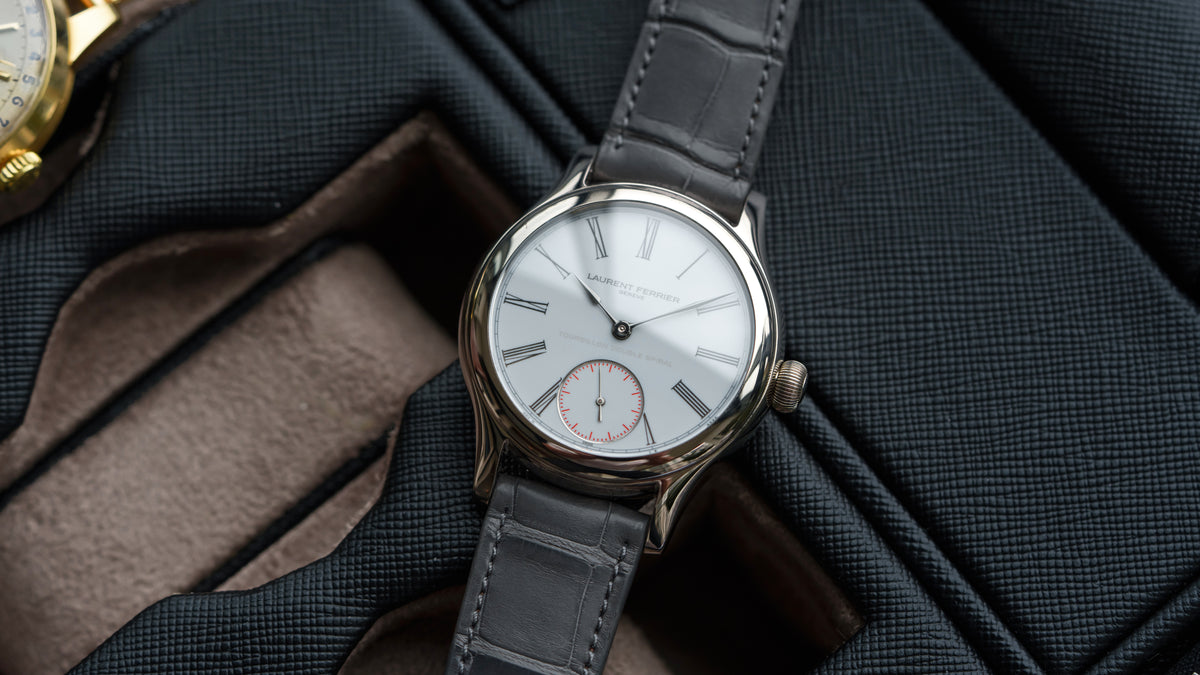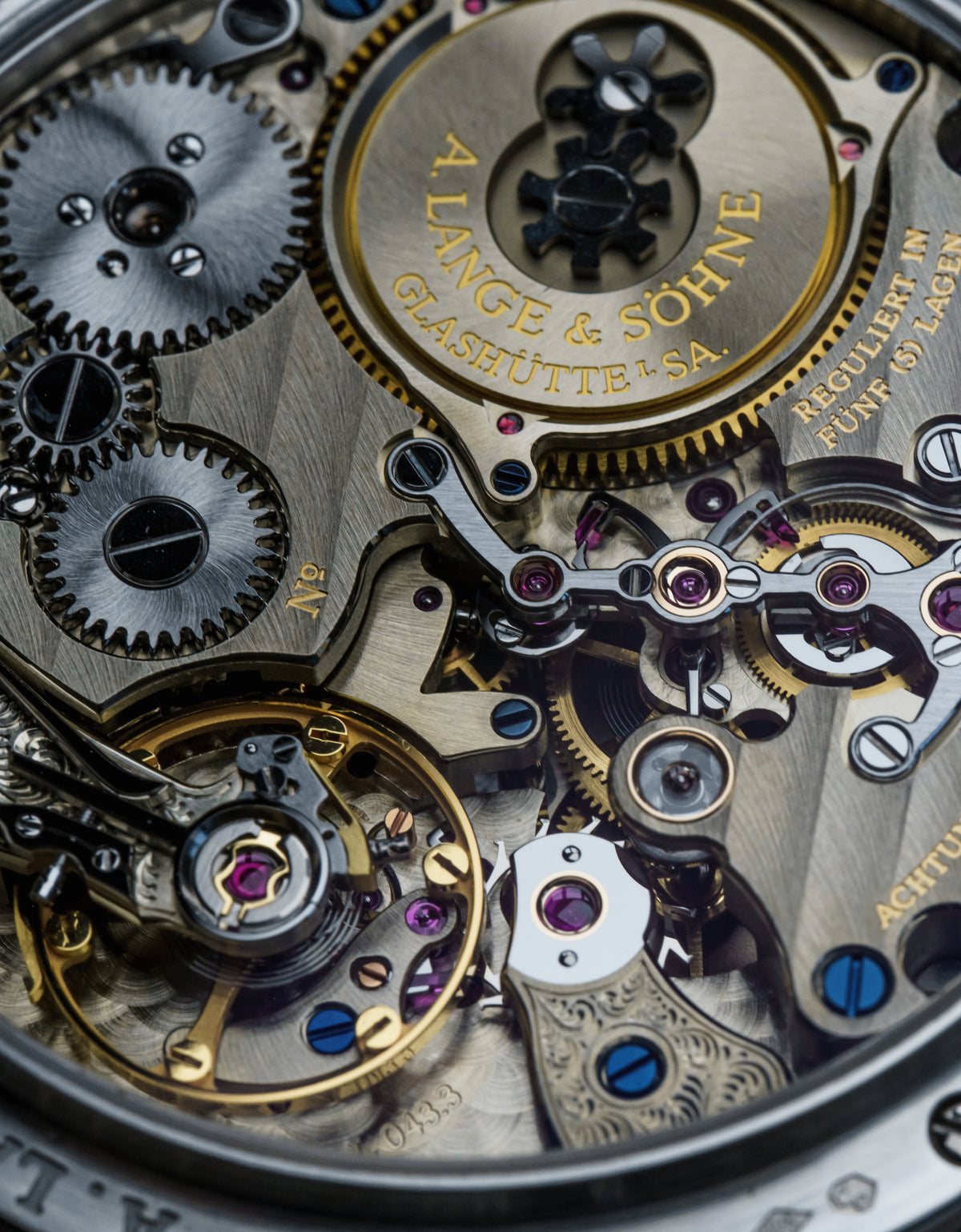FP Journe Octa Lune Brass Movement
Few manufactures have such a harsh delineation between early and latter models as the renown FP Journe. Sure, as an example Rolex produced early dials in gilt and transitioned to tritium, but that’s just a detail. Journe shifted the entire foundation of their movement from brass to gold after an estimated 2000 examples. All brass movements were part of the early years from 2001 to 2004. Can you imagine how collectible a neo-vintage Patek would be if they shifted all production to gold around the new millennium? Collectors of François-Paul have only just begun snatching up brass movements in the last few years. Without wishing to comment on value, I suspect we are at the dawn of a niche.

The Octa Lune is a discreet, classic 38mm Journe. A contraction of octa, latin for infinite (read: automatic) and lune (read: moon-phase indication), the model incorporates a 120-hour reserve and shock system for daily use ability. That massive reserve is accomplished through a meter-long mainspring with limited torque, quite a trick bit of engineering. FP Journe is highly-regarded for many reasons, but one of them is that he likes to design his movements to be fully-integrated within the same volume. This maintains classic proportions like we see here. In addition, there are his signature flourishes like a rope-wound crown, ‘Invenit et Fecit’ (invented and made) signature, and an early-production dial here which tends to oxidize mildly over time. Yellow gold dials like we see here were used exclusively in pre-gold movement platinum-cased examples.

The example shown here has only just begun to show that oxidation patina in the loveliest way. With more frequent wear, one can expect the same results we see plastered across Instagram. The polished platinum case is only showing remarkably light surface wear. The watch is sold with a full set and a rare full service history.

Find this Brass Octa Lune here from Watch4moi 125000 GBP.









































0 comments
Write a Comment